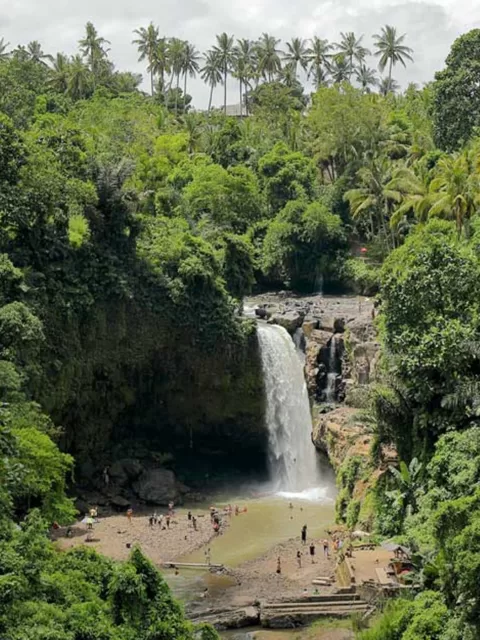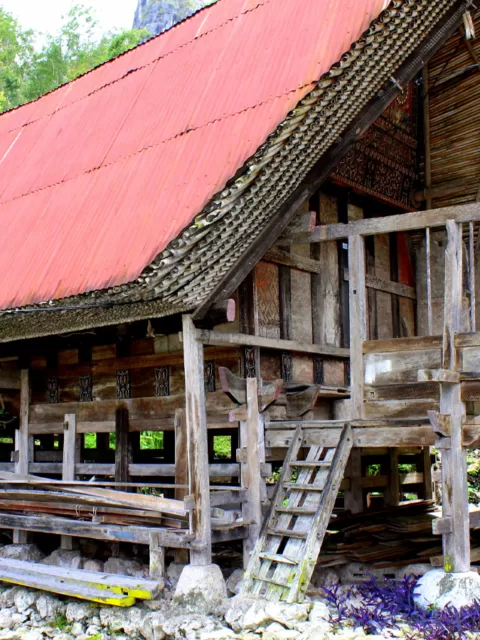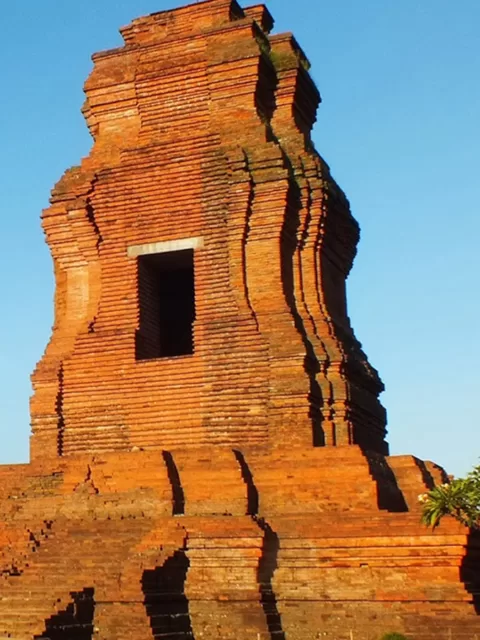The Enchanting Rhythms of Kecak Dance: Bali’s Cultural Gem
Introduction
Bali, an enchanting island paradise in Indonesia, is renowned for its rich cultural heritage and mesmerizing natural beauty. The Kecak dance, a unique and captivating performance form, is one of the island’s most iconic cultural gems. This traditional Balinese dance form, characterized by its rhythmic chants, captivating fire element, and elaborate costumes, embodies the essence of the island’s spiritual essence and cultural heritage.
The Kecak dance, also known as the Ramayana monkey chant, is a form of Hindu dance and music drama that originated in Bali in the early 1930s. The dance is based on the Ramayana, an ancient Indian epic that recounts the tale of Prince Rama’s quest to rescue his wife Sita from the demon king Ravana.
The Kecak dance is typically performed by a large group of male dancers, who sit in a concentric circle and chant the syllables “cak” and “ke” in a rhythmic pattern. The dancers’ movements are synchronized with the chanting, creating a mesmerizing and hypnotic effect. The dance is accompanied by a traditional Balinese gamelan orchestra, which adds to the overall sensory experience.
In addition to its captivating rhythm and melody, the Kecak dance is also known for its elaborate costumes and fire element. The dancers typically wear black and white sarongs and headbands, with their faces painted white to resemble the monkeys from the Ramayana. During the fire dance, the dancers move through burning embers, creating a dramatic and awe-inspiring spectacle. The fire element is believed to symbolize the power of the gods and the purity of the Kecak dance.

The Kecak dance is more than just a performance; it is also a form of prayer and ritual. The dance is often performed in temples and other sacred spaces, and it is believed to have a powerful spiritual significance. The Kecak dance is typically performed as an offering to the gods. The dancers’ chanting and movements are believed to create a sacred space and invite the gods to descend to Earth. The dance is also believed to have a cleansing and purifying effect.
The Kecak dance is also a way for Balinese people to connect with their cultural heritage and spiritual traditions. The dance tells the story of the Ramayana, which is one of the most important epics in Balinese culture. The dance also incorporates a number of Balinese Hindu beliefs and practices.
The Origins of Kecak Dance
The Kecak dance is believed to have originated from a Balinese trance dance ritual called Sanghyang. In the Sanghyang ritual, dancers would enter a trance state and channel the spirits of deities. The Kecak dance was developed as a more accessible and modernized version of the Sanghyang ritual.
The Kecak dance was first performed in the 1930s by a group of Balinese dancers led by Wayan Limbak. Limbak collaborated with German painter Walter Spies to create a choreographed version of the Sanghyang ritual that was more appealing to Western audiences. The Kecak dance quickly became popular among tourists and locals alike, and it remains a popular cultural attraction in Bali today.
The Enchanting Rhythms of Kecak Dance
The Kecak dance is characterized by a number of unique elements, including:
- The “cak” chorus: The Kecak dance is performed by a large group of male dancers who chant the syllables “cak” and “ke” in a rhythmic pattern. The chanting is accompanied by the dancers’ movements, creating a mesmerizing and hypnotic effect.
- The role of dancers: The dancers in the Kecak dance play a variety of roles, including monkeys, gods, and demons. The dancers’ movements are synchronized with the chanting and music, and they use their facial expressions and gestures to convey the story of the Ramayana.
- Costumes: The dancers in the Kecak dance wear elaborate costumes that reflect their roles in the performance. The monkey dancers typically wear black and white sarongs and headbands, with their faces painted white. The other dancers wear costumes that are appropriate for their roles, such as golden crowns for the gods and red sarongs for the demons.
- Fire: The fire element is one of the most distinctive features of the Kecak dance. During the fire dance, the dancers move through burning embers, creating a dramatic and awe-inspiring spectacle. The fire element is believed to symbolize the power of the gods and the purity of the Kecak dance.
The Kecak dance is a truly immersive and sensory experience. The rhythmic chanting, synchronized movements of the dancers, and the atmospheric setting create a performance that is both captivating and mesmerizing.
The Captivating Rhythms
One of the most striking features of the Kecak dance is its unique rhythm. The dance is performed by a large group of male dancers, who sit in a concentric circle and chant the syllables “cak” and “ke” in a rhythmic pattern. The chanting is accompanied by the dancers’ movements, creating a mesmerizing and hypnotic effect.

The Kecak dance is also accompanied by a traditional Balinese gamelan orchestra. The gamelan orchestra is made up of a variety of percussion instruments, such as gongs, metallophones, and drums. The gamelan orchestra adds to the overall sensory experience of the Kecak dance, creating a rich and complex soundscape.
The Elaborate Costumes
The Kecak dancers wear elaborate costumes that reflect their roles in the performance. The monkey dancers typically wear black and white sarongs and headbands, with their faces painted white. The other dancers wear costumes that are appropriate for their roles, such as golden crowns for the gods and red sarongs for the demons.

The Kecak costumes are not only visually stunning, but they also have a symbolic significance. For example, the monkey dancers’ white faces represent the purity of the monkey kingdom. The golden crowns worn by the gods represent their divinity. And the red sarongs worn by the demons represent their evil nature.
The Fire Element
The fire element is one of the most distinctive features of the Kecak dance. During the fire dance, the dancers move through burning embers, creating a dramatic and awe-inspiring spectacle. The fire element is believed to symbolize the power of the gods and the purity of the Kecak dance.

The fire dance is typically performed at the end of the Kecak performance. It is a fitting climax to this mesmerizing and enchanting dance form.
The Kecak Dance and Balinese Spirituality
The Kecak dance is more than just a performance; it is also a form of prayer and ritual. The dance is often performed in temples and other sacred spaces, and it is believed to have a powerful spiritual significance.
The Kecak dance is typically performed as an offering to the gods. The dancers’ chanting and movements are believed to create a sacred space and invite the gods to descend to Earth. The dance is also believed to have a cleansing and purifying effect.
The Kecak dance is also a way for Balinese people to connect with their cultural heritage and spiritual traditions. The dance tells the story of the Ramayana, which is one of the most important epics in Balinese culture. The dance also incorporates a number of Balinese Hindu beliefs and practices.
For example, the Kecak dance often depicts scenes from the Ramayana, such as Rama’s battle with Ravana or Sita’s abduction. The dance also features a number of Balinese Hindu symbols and motifs, such as the lotus flower and the garuda bird.
The Kecak dance is a powerful expression of Balinese spirituality. It is a performance that is both visually stunning and spiritually meaningful.
The Evolution and Influence of Kecak Dance
The Kecak dance has evolved over the years to incorporate new elements and adapt to changing times. For example, the dance was originally performed by only male dancers, but female dancers have begun to participate in recent years. Additionally, modern elements, such as lighting effects and stage props, have been incorporated into some Kecak dance performances.
Despite these changes, the Kecak dance remains rooted in its traditional Balinese Hindu roots. The dance continues to be performed in temples and other sacred spaces, and it is still used as a form of prayer and ritual.
The Kecak dance has also had a significant influence on world dance and music. The dance’s unique rhythms and movements have been incorporated by choreographers and musicians from around the world. The Kecak dance has also been featured in films and television shows, helping to raise its international profile.
Experiencing Kecak Dance: What to Expect
If you have the opportunity to experience a Kecak dance performance in Bali, there are a few things you should expect.
First, the performance is typically held in an outdoor setting, such as a temple courtyard or a cliffside overlooking the ocean. This creates a truly atmospheric and immersive experience for the audience.

Second, the performance is usually quite long, lasting for several hours. However, the time will fly by as you are captivated by the mesmerizing rhythm and captivating visuals of the dance.
Third, the Kecak dance is a very participatory experience. The audience is encouraged to participate in the chanting and clapping, and the dancers may even interact with the audience during the performance.
Here are some tips for experiencing a Kecak dance performance:
- Arrive early to get a good seat. The best seats are usually located in the front rows, where you can get a close-up view of the dancers.
- Be respectful of the dancers and the performance space. Avoid talking loudly or taking flash photos during the performance.
- Participate in the chanting and clapping. This will help you to feel more connected to the performance and the other audience members.
- Enjoy the experience! The Kecak dance is a truly unique and unforgettable cultural experience.
Kecak Dance: A Cultural Gem of Bali
The Kecak dance is a mesmerizing and enchanting performance form that embodies the essence of Balinese culture and spirituality. The dance’s unique elements, such as its rhythmic chants, captivating fire element, and elaborate costumes, create a truly unforgettable experience for audiences of all ages.
The Kecak dance is a reflection of Balinese culture, beliefs, and spirituality. The dance tells the story of the Ramayana, which is one of the most important epics in Balinese culture. The dance also incorporates a number of Balinese Hindu symbols and motifs.
The Kecak dance has also been showcased internationally in recent decades. The dance’s unique beauty and captivating energy have captured the hearts and minds of audiences around the world.
Conclusion
The Kecak dance is a timeless treasure that embodies the rich cultural heritage of Bali. It is a performance that should be experienced by everyone who has the opportunity.
The Kecak dance is a reminder of the power of art and culture to unite people and celebrate our shared humanity. It is also a reminder of the importance of preserving and promoting our cultural traditions for future generations.
The Kecak dance is a truly unique and unforgettable cultural experience. Its captivating rhythms, elaborate costumes, and fire element combine to create a performance that is both visually stunning and spiritually meaningful.
If you have the opportunity to experience a Kecak dance performance in Bali, be sure to take it. It is an experience that you will cherish for a lifetime.












